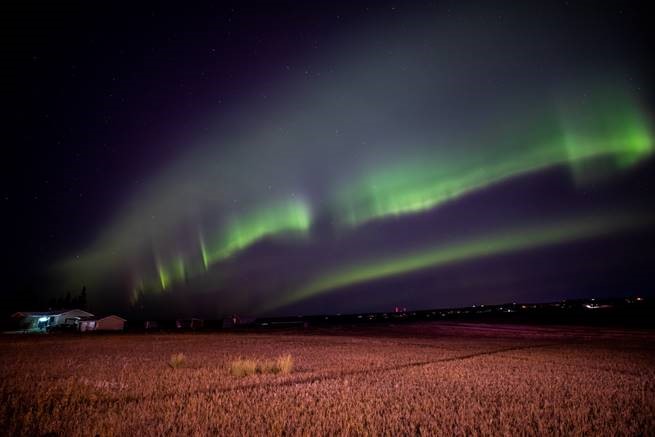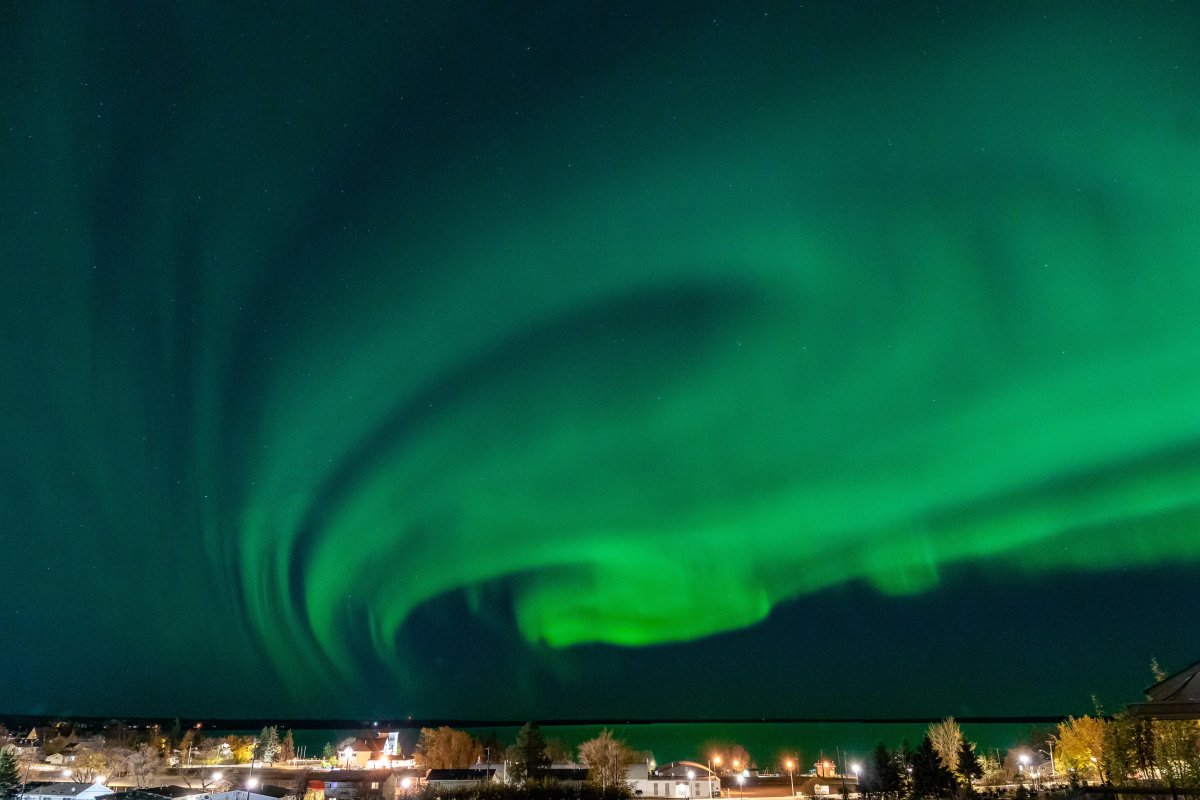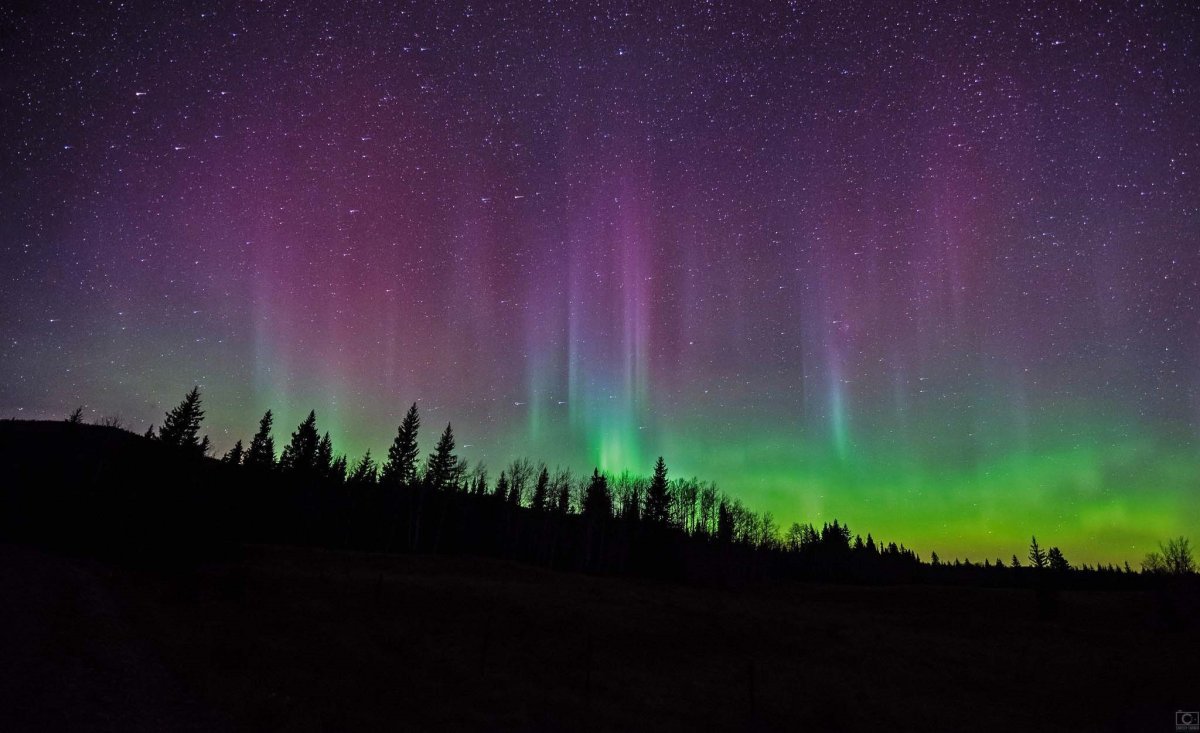Two weeks ago residents in Southern Alberta witnessed amazing northern lights, also known as the aurora borealis.

While it’s commonly said that you need to travel to northern Alberta or the Northwest Territories to see them, it’s not unheard of to see in the southern part of the province.
Christy Turner, an aurora chaser in Calgary, first saw the stunning lights a few years ago while driving on a highway east of the city and since then she’s been hooked on chasing them.
“The funny thing is a couple people have said to me when you’ve seen it once, you’ve seen it enough. The crazy thing is that couldn’t be more wrong.
“It’s never the same show twice.”
The phenomenon occurs when electrically charged particles from the sun hit the Earth’s upper atmosphere, then interact with oxygen and nitrogen.
The chances of seeing it increase in the fall and last through winter and spring on dark, clear, cool nights.
The Calgary Aurora Chasers and Alberta Aurora Chasers are two local groups that monitor the potential for an aurora.

They analyze data, track solar events, monitor solar wind speeds and then share their findings on social media, but Turner said there is never a guarantee you will see one.
“The data might look fantastic. You might think there’s a great show brewing and nothing will happen,” said Turner.
“Then we’ll have a night when we’ll get a super bright show. It’s volatile. It’s not a movie, so persistence will pay off over time for sure.”
The chance of seeing an aurora increases by finding a place to view them, away from city lights, explained photographer Matt Melnyk.
Nose Hill Park is a popular spot within the city of Calgary, Melnyk pointed out. He also suggests driving a few minutes outside on a country road near Cochrane and Airdrie where there is less light pollution.

“Sometimes you have to wait until about two to three in the morning to see something,” Melnyk said.
“It’s quite rewarding to just see the different colours, the purple, the greens, reds, the blues.”
There has been a steady rise in the number of aurora chasers in Alberta.
“It’s like nothing else in the world. It feels like the sky is alive,” 22-year-old astrophotographer Dylan Kaniski said.
“The aurora is constantly moving and changing, changing colours, changing speed, intensity — so it really feels like you’re watching the world come to life in front of you.”

According to Alberta Aurora Chasers’ Chris Ratzlaff, many young people are fascinated by the aurora. Ratzlaff said early in 2021, the Alberta Aurora Chasers Facebook group had 30,000 members. That number has tripled to more than 100,000.
He said chasing auroras is something people can do to get outdoors and socialize with others in a safe way during the pandemic.

Ratzlaff said photographs of auroras are more vibrant than what people see because cameras are more sensitive, they don’t have limitations and are able to pick up a range of colours using a long exposure.
Astrophotographer Kaniski offers advice for those trying to take pictures at night.
“Make sure you’re shooting in long exposures. My settings are usually around 10 seconds with an aperture of 2.8 and an ISO of 1600.”
The Royal Astronomical Society of Canada has designated five places in Alberta as Dark Sky Preserves: Cypress Hills in southeastern Alberta; Jasper National Park; Beaver Hills, east of Edmonton; Lakeland Provincial Park, east of Lac La Biche; and Wood Buffalo National Park in northern Alberta.
“A dark sky preserve is basically an astronomy park where local rules defend the light against light pollution from big cities,” said Peter McMahon, general manager at the Jasper Planetarium and award-winning author and science journalist.
“And Jasper is especially a good place to have one of those because there aren’t that many street lights here already, the mountains block out a lot of the light pollution coming from cities — basically it is just a great place to view the night sky.”

Once you spot an aurora it’s important to document and report your sightings.
This helps scientists further study this mysterious phenomenon and its impact on our communications network.
“It’s always possible that an exceptionally large flux of charged particles can overload the satellite circuitry and burn it out,” Roland Dechesne, with the Royal Astronomical Society of Canada, told Global News.
“The more we understand, the better we can anticipate some of the problems that could plague our technical devices.”
Aurorasaurus.org is a citizen-science site where anyone can post positive sightings in your area.
Dr. Elizabeth MacDonald, who works for NASA and founded Aurorasaurus.org, said Alberta is a great place to see the northern lights.
“Alberta has an amazing community of citizen scientists and opportunities to see the aurora year round, it’s really important to get involved because the aurora are always changing and conditions are always changing,” she told Global News.








Comments